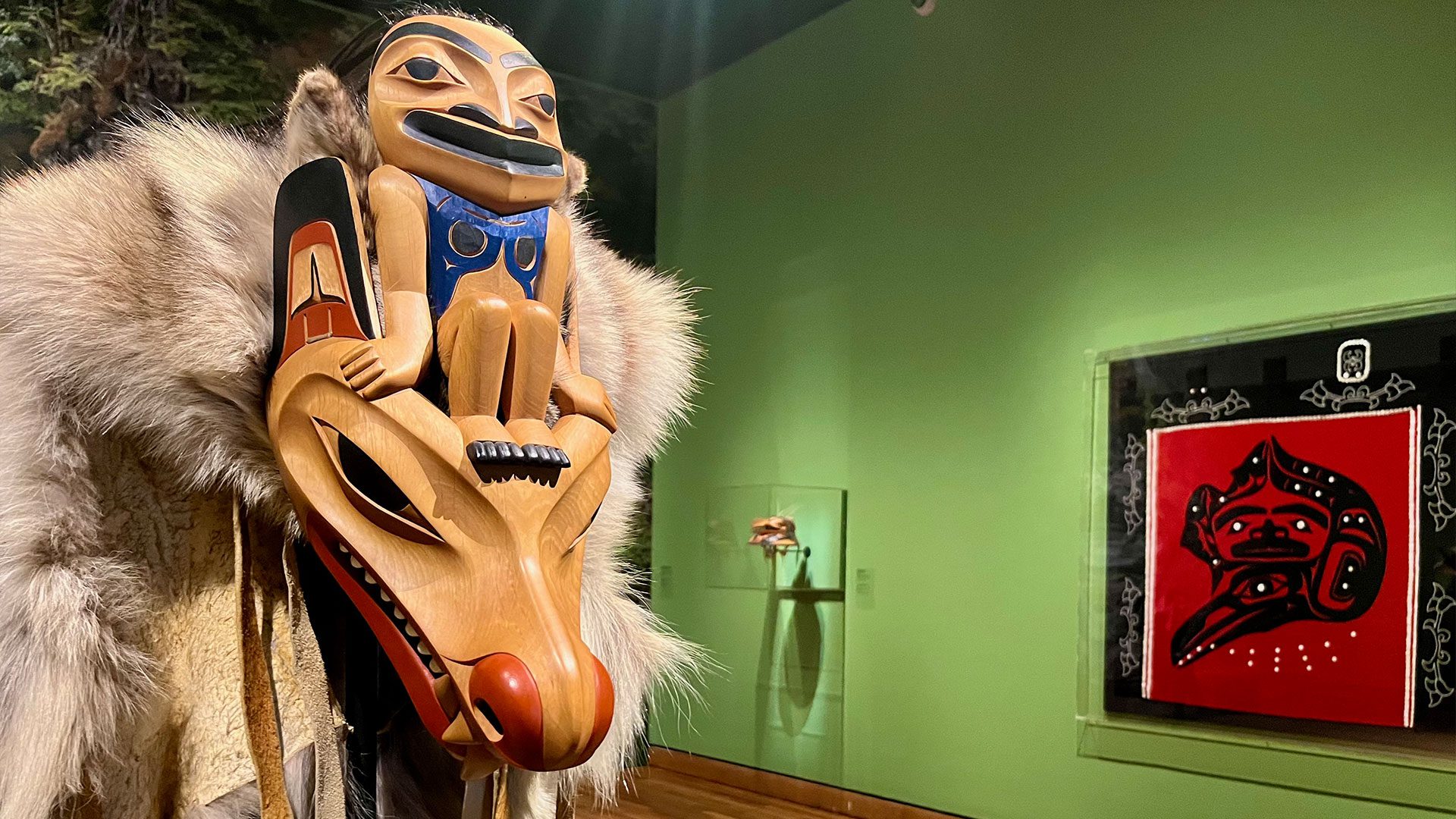For years, Dempsey Bob followed a pattern in his work – carve a piece, sell it and begin again. Over and over.
Bob was one of the first Northwest Coast artists in British Columbia to find a market for his wares.
First, they were purchased by private collectors, then acquired by museums. Due to the sheer volume of work created, many pieces ended up tucked away in storage.
This is why Wolves: The Art of Dempsey Bob, is more than just a museum exhibit. For the artist, it’s more like a family reunion.
“I can feel these guys – they’re like my children. I haven’t seen them for a long time,” Bob told APTN News, referring to the 60-something pieces now on display at the Montreal Museum of Fine Arts.
“This one piece was looking at me, this little mask – and it was like ‘where the hell have you been, dad? It’s been 40 years! I haven’t seen you for 40 years!’”
Wolves is the first full-career retrospective looking at Bob’s prolific carving career. After a successful run, the show is now making its debut in Eastern Canada.
The Tahltan-Tlingit artist, now 75, is one of the most well-known artists from the northwest coast of Canada.

He’s been recognized by the Order of Canada, and the Governor General, for his contributions to the art world.
But Bob told APTN his success as an artist came as a surprise.
“We never thought we’d get this far. Not in one lifetime, because of where we started,” he added.
“When I’m not carving, I feel like I’m wasting my time.”
When he was first starting out, Bob says there was little market interest for northwest coast art.
As he tells it, the tides only started turning sometime in the early 1980s.
For Montreal Museum of Fine arts curator Iris Amizlev, it’s important that Bob is reviving his culture.
“Because his people were not allowed to carve, his people were not allowed to express their culture and not allowed to practice their religion for so long,” she said.
“The idea that he can be here in this museum now – and that we’re all surrounded by this magical production – is so meaningful. It’s so empowering. and it’s the way it should be.”
Historical Northwest Coast items are displayed as objects of curiosity in museums around the world.
However, institutions are slowly warming to the idea of repatriating cultural items back to the communities and nations of origin.
The National Museum of Scotland, for example, returned a stolen memorial totem pole to the Nisga’a Nation in late 2022.
Bob said these items are important for education – but equally important is an acknowledgement of how they were used in the past.
“When we were at the British museum – we felt like the pieces wanted to come home with us. and we sang them a song, and it was really powerful because they hadn’t heard a song in 200 years,” Bob explained.
“They were used in dance, the masks. with songs, and acted out. They weren’t just “pieces,” they were like part of us. Living pieces, you know?”
The Montreal Museum of Fine Arts, Canada’s oldest art museum, said it’s making strides to be more inclusive of Indigenous art and artists – including the recent hiring of a curator of Indigenous art.
“The idea of finding these objects in museums – some people say they shouldn’t be there. And that they should be repatriated,” Amizlev added. “And that’s a whole process that I think all museums are thinking about now.”
According to Amizlev, this also means implementation of a more rigorous vetting process when acquiring – or selecting – pieces to display.
“There are objects that, unless they are acquired with the right kind of provenance, we don’t accept them into our collection anymore,” she said.
“It’s important to make sure our collections are properly collected.”

The pieces spread out chronologically through four rooms at the museum, were wrangled from all corners of the country – some even loaned out by the National Gallery of Canada.
To Bob, the show is a celebration of how far Indigenous artists have come.
“When I started, we didn’t know how to make tools, we didn’t know what kind of wood – but we knew the stories. I was lucky I had learned the stories”
“Wolves: The Art of Dempsey Bob” runs until Sept. 10 at the Montreal Museum of Fine Arts.










